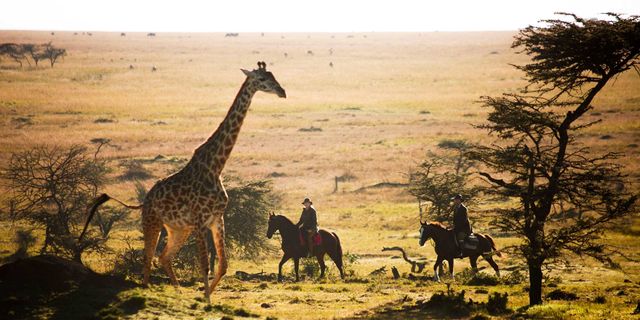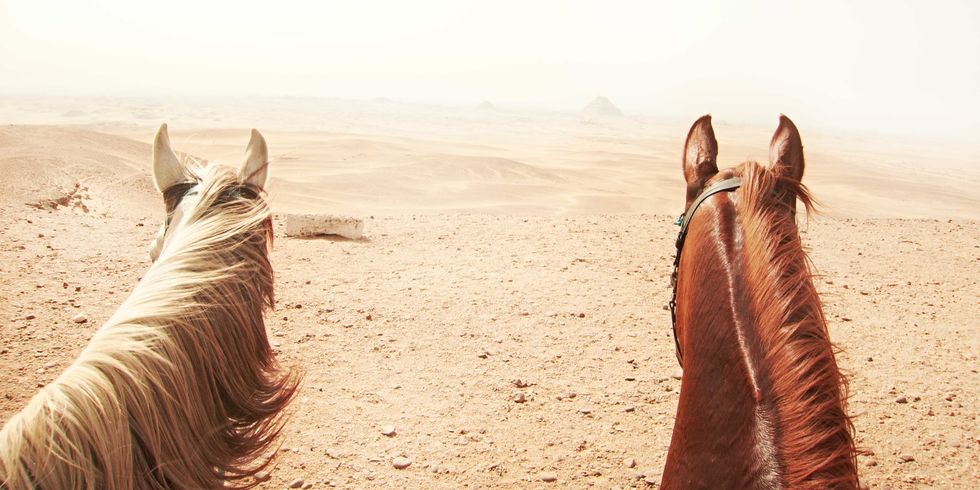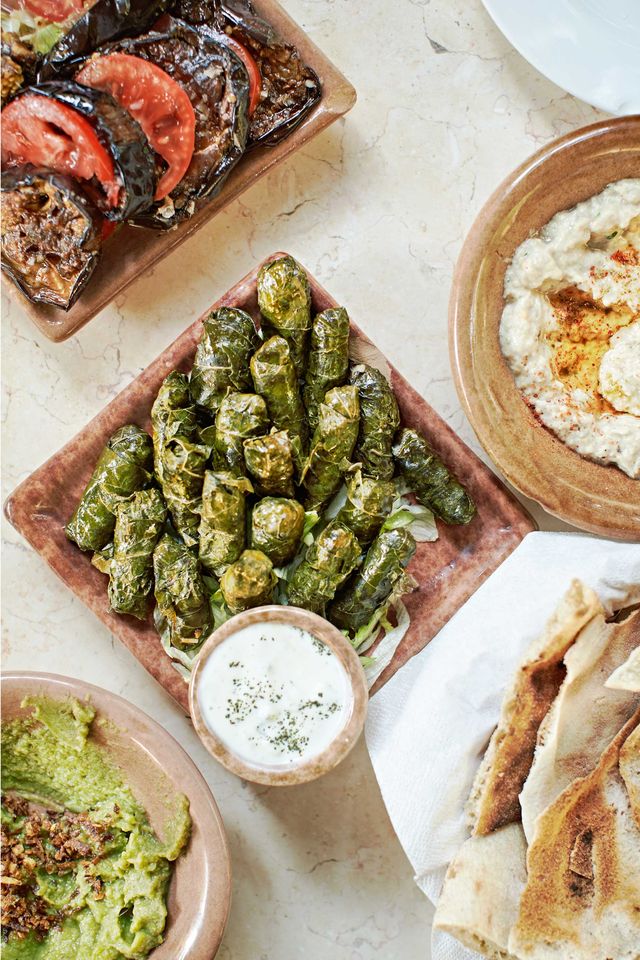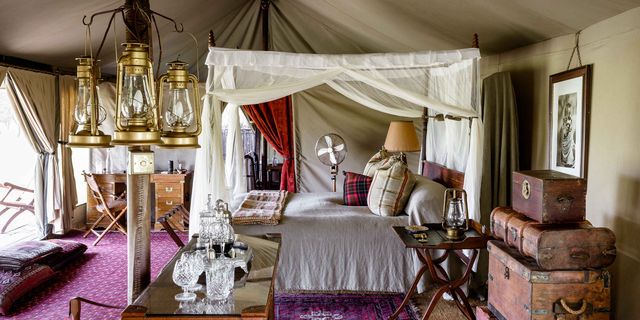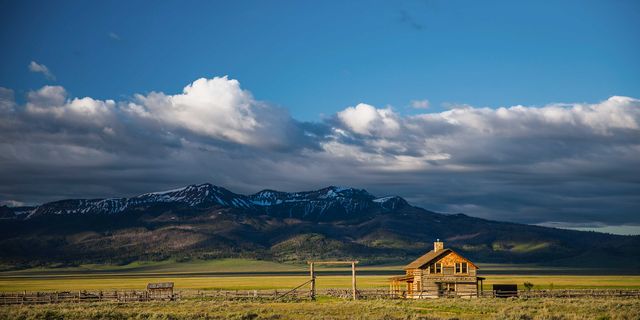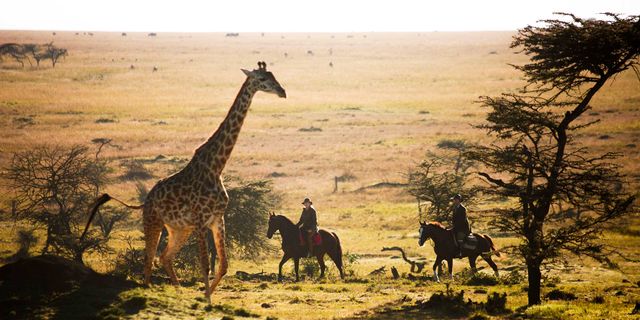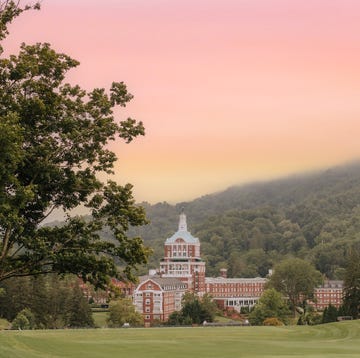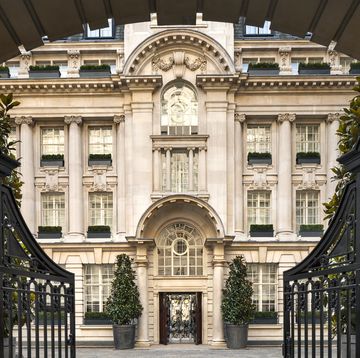He was a gray gelding, and his name, Scrappy Doo, was the Egyptian stable's unfortunate nod to the tourist trade on the Giza plateau, where foreigners bounced around the sands in the shadows of the pyramids on skinny descendants of great Ottoman warhorses. Scrappy Doo was well fed, though, for he was popular with the tourists and a ringer for Marengo, Napoleon's favorite stallion, a charger bred for speed, endurance, calmness, and smarts who was reputedly captured at the Battle of Aboukir, during the emperor's 1798 invasion of Egypt, and later painted, rearing in the Alps, by Jacques-Louis David.
Scrappy Doo did no rearing when I would take him out. I was living in Cairo, and I would go with friends on long desert hacks as far south from Giza as the step pyramid of Saqqara. But he had a long, floating trot and a Cadillac-smooth canter, and, like many Arabians, as his breed is known today, he was small enough that if I jumped off to look at an interesting rock, fox hole, or piece of old bone or pottery jutting out of the sand, I could climb back up without a mounting block—I was still an inexperienced rider then. He would trudge obediently up sand hills from which we surveyed, in desert solitude and silence, the lesser pyramids, the distant Cairo skyscrapers, and flocks of migrating African storks spiraling above the farms and date plantations between the Nile and the desert fringe. For a picnic atop a dune at sunset we would use a cell phone to order grilled quail, an Egyptian specialty, which would arrive some time later via a donkey delivery service.
But Scrappy Doo always got a reward for his patience: an all-out run, which he demanded, unmistakably, by prancing, sidestepping, and tossing his head whenever we reached a wind-eroded, hard-packed flat. When I first learned to gallop—not in a ring but in the desert—I was taught the all-important emergency brake: Steer the horse up a dune and hope it runs out of steam before you reach the top. With Scrappy Doo, I soon dispensed with the dune brake and just let him go as long as he pleased. I would stand in the stirrups, grab fistfuls of mane, and press reins and knuckles to his neck as he surged, so fast I could scarcely feel the beat of his hooves.
Like a skier racing down an icy slope, or a surfer barreling over razor-sharp coral, I lived for the focus and rush of those glorious, adrenaline-charged moments. But even more addictive than the raw physicality was the delicious desert solitude. Scrappy Doo needed sprints to circulate his blood after being cooped up in a stall, but it was his endurance while walking or trotting in the dry heat that enabled us to reach tombs in which ancient Egyptians had painted some of the earliest chariot horses—perhaps also his ancestors. (Mummies of some of them were on display in the Egyptian Museum.) The sand had concealed their bones, and the breezes, according to ancient Egyptian belief, had carried the ba (souls) of their caretakers to the afterlife. The little gray horse was not just desert transportation but a companion and a living time machine amid traces of caravans, cavalries, and catacombs. On his back I felt freedom and a link to my own human forebears, who discovered that there are better ways to travel than pounding one's feet on the ground.
The thrill of riding a fit, fast Arabian in the type of environment it was bred for instilled in me a longing to experience other parts of the world on horseback. But I had to get better at it first. "Don't be afraid," Mahmoud Saadi Mahmoud, the head instructor at the El Zahraa Stud Riding School, told me after assigning me to Nafis ("precious" in Arabic), a dapple gray stallion with a rock star–wavy mane and black eyes to drown in. A stallion? For a relative novice like me? "Arabians are hot-blooded, but they're intelligent and athletic, and many stallions are happy being ridden," Mahmoud said. Nafis (so-called because he was a gift to the school from the horse-loving king of Bahrain) barely broke a sweat trot- ting, cantering, and, eventually, leaping with me over small jumps in sand rings shaded by tall eucalyptus and palm trees amid corrals and villas dating back to the facility's founding, in 1931. "Arabian horses were made by God for the desert and to be companions," the trainer would say proudly. "If you can ride an Arabian stallion, you can ride anything."
Taking Mahmoud at his word, I eventually did, to a point. Riding a beautifully turned-out animal in exotic surroundings where I don't have to oil tack or muck out stalls is now my favorite form of luxury travel. I have pushed grass-fed cattle aboard a quarter horse on a working ranch in Montana, wearing padded bicycle pants under my jeans for long days in the saddle aboard a fat-backed pinto mare; she would pivot at the lightest touch of a neck rein to gather a straying calf and made executive decisions to nip the slowest beeves. I have helped condition a palomino endurance racer, half Arabian and half Akhal-Teke (an endurance breed from Turkmenistan), that trotted faster than many horses can canter for miles on paths in California redwood country. (I needed a hot tub to recover each day, after learning how to take the mare's pulse, time her recovery rate, and be more attentive to the terrain and a horse's physical condition.) And, while on a conventional African safari, I rode a horse that seemed bigger than the Ritz, a huge thoroughbred belonging to hedge fund mogul Paul Tudor Jones II at a luxury lodge at Singita Grumeti, his 350,000-acre concession on a plateau overlooking the Serengeti Plains in Tanzania. That all too brief ride—at the wrong time of year for the wildebeest migration—inspired me to keep up my galloping skills. Approaching one of those huge herds on a quadruped instead of in a 4X4 sits atop my travel bucket list.
"The beauty of a horse is not what it looks like but what you can do with it," said Sami Al Boenain, the general manager of Qatar's Racing and Equestrian Club. This was during a recent trip to Doha, where I sought out not just the treasures in the Museum of Islamic Art and the Arab Museum of Modern Art but the living heritage of the club's track, where in winter Qataris—descended from the tribes that conquered the Connecticut-size Persian Gulf peninsula on horses and camels in the 18th century—run Arabian speed races. (Qataris remain besotted with fine horseflesh generally, and the Al Thani clan, the country's ruling family, is currently the main sponsor of the Prix de l'Arc de Triomphe in Paris, Europe's most prestigious horse race, held every October at Longchamps.)
Al Boenain was talking speed, but it's the emotional mix of going forth into unfamiliar terrain, learning about otherwise inaccessible cultures, and creating bonds with both two- and four-legged strangers that has swelled the ranks of equestrian travelers heading for destinations as varied as Rajasthan, Hungary, Lesotho, and the Great Wall of China. "I've seen an uptick in the tour operators that offer equestrian treks and vacations," says Kristen Lamoureux, who tracks the $263 billion adventure tourism market as associate dean of New York University's Tisch Center for Hospitality and Tourism.
"Horses were part of society for thousands of years, and riding for hours and sitting around a fire at night is a powerful draw, even for people who have never ridden before. It's a way to connect not just with nature but with ancient habits absent in modern life," says T.A. Carrithers, who runs his family's Estancia Ranquilco, a remote 100,000-acre spread in Patagonia. He also leads horseback expeditions around Mongolia's Lake Khovsgul, on the Eurasian steppe that runs between Mongolia and Kazakhstan, which is where, archaeologists believe, the horse was first tamed, 6,000 years ago. Both countries are now home to small, tough, ancient-looking horses (collectively known as Mongolians) that live semi-wild without the comforts of barns, supplemental feed, farriers, or vaccines, on the boundary between domestication and natural selection.
It's possible to experience a wilderness steppe on horseback closer to home, too. At Zapata Ranch, in the San Luis Valley in Colorado, on the far western edge of the great American prairie, I felt not just the breeze on my face but the ground vibrating through the body of my Appaloosa mount as a herd of bison galloped past us at the Great Sand Dunes National Park and Preserve.
Lari Shea, a ranch owner who lives just north of Mendocino, California, had a different visceral reminder of the primal prey-predator dynamic while on a horseback safari in Kenya's Masai Mara reserve. Two unsaddled spare horses following the group bolted, spooking the rest of the "herd" to take off, with riders onboard. "For a few moments it was all wild eyes and tongues hanging out, both the horses' and humans'," she recalled. With seeming telepathic courage, all the horses suddenly wheeled in unison to face a stalking lioness, which the loose horses had been the first to sense. "That cat slid to a stop, pawed the air, and let out a roar like the MGM icon," Shea told me. "Our guide said, 'Do not look her in the eye, move the horses closer together, and walk away in a knot so she can't make out individuals.' It was terrifying and thrilling."
"In the 1930s more Americans knew how to ride a horse than drive a car," says Bayard Fox, owner of Wyoming's Bitterroot Ranch and founder of the travel agency Equitours. Even so, today some 2 million Americans own 9.2 million horses, according to the American Horse Council, and equine travel is exciting for many who, unlike me, own their own horses and ride regularly at home.
"Just hanging on, not knowing what's coming up in front of you, riding for the joy of it—as opposed to worrying about the course, or about winning, or about get- ting hurt—made me a better, braver rider for sure," says Genevieve Dutil, a landscape designer and competitive three-day-eventer from Los Angeles, of a trip she took last year to County Clare, Ireland. She rode cross-country there with a breeder of Irish hunters who "liquored us up and took off across a muddy field using a branch for a whip. We jumped stone walls, and if you jumped the sheep, too, that was fine." Dutil has a riding safari in Botswana planned for next year. "My dream is to gallop among wild giraffe," she says. "At home I ride with a trainer six days a week, learning this strange sport, which seems so extraneous in the modern world. I'm thrilled to do something special with my skill."
My skills are not hers, notwithstanding my lessons on Nafis. But I too have my plans. I want to go to Iceland to ride animals thought to descend from Mongolian mounts obtained by the Vikings from Central Asian traders; these ponies carry six-foot-tall men up the slopes of volcanoes and are known for an odd fifth gait, the tölt, a smooth running walk that I'm told feels like those mechanized vibrating beds in old motels. I'd like to practice dressage in the Algarve on a Lusitano, a breed of beautifully proportioned animals descended from heavy European warhorses crossed with the hot-blooded North Africans brought by the Moors to the Iberian peninsula; today Lusitanos are used in cattle work and mounted bullfighting. And I want to tour the Turkoman steppe atop a Caspian, a type captured by Alexander the Great on his campaigns and the ideal way to experience Iran's Golestan National Park, which has forests and plateaus that are home to ibexes, wild boars, leopards, and gazelles.
Wherever I travel I remain open to chance equine encounters. I was staying recently at the Fairmont Mount Kenya Safari Club, near Nanyuki, which before actor William Holden bought and renamed it in 1959 was the 1930s love nest of a Manhattan socialite, Rhoda Lewinsohn, who left her husband to take up with a French bush pilot, Gabriel Prudhomme. I fell hard there myself, for an irresistible chap called Casper, a bay thoroughbred gelding and retired racehorse, who stood calmly on the lawn at teatime, perfectly tacked in an English saddle, tempting potential riders. On the spot I hired a guide for a late afternoon hack into Mount Kenya National Park. Because Scrappy Doo taught me to always love speed, I was interested in one thing only: Where was the safest place to canter and, better yet, gallop, on a 17,000- foot mountain clothed in forests full of elephants, leopards, African buffaloes, and tsetse flies? An old dirt airstrip, my guide said, and led the way.
But something—a rustling in the grass—spooked Casper once we got there, and he jumped forward as if out of a starting gate. By the time I managed to stop him, his belly shuddering and gulping air, I had second thoughts about that gallop, and we spent the next two hours walking, taking in the panorama of Mount Kenya's mist-wreathed peaks and glaciers as the horses carefully sidestepped shrubs, termite mounds, and warthog burrows. And suddenly, after we had made our way farther up, there emerged before us from a shady stand of fern pine and bamboo three albino zebras, as improbable a sight as unicorns. The five equines all stopped and faced one another, ears flitting back and forth, exchanging scents and who knows what information until the zebras turned their backs on their tall cousins and slipped back into the foliage like ghosts. Casper and I stood still and silent a while longer, both of us, I felt, savoring the magic of the moment, until I finally nudged him forward with my knees and we headed for home.
